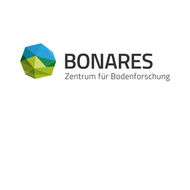doi:10.25680/6422.2018.85.59.012
Abstract
Large quantities of soil data are collected within numerous regional field studies, national- and international research projects and from long-term field experiments. Over recent decades, the change from analog to digital data recording and storage opened new opportunities for soil research, accompanied by challenges in data management and -exchange. We are currently observing a rapid increase in soil research data which is largely because of new recording technologies with high temporal and spatial resolutions, such as remote and proximate sensors, field spectrometer or laboratory scanner. Still soil data are mostly stored decentralized in so called “data silos” at institute servers or distributed data centers. These data are rarely described by metadata and often not accessible or difficult to find for external (re-)use. However, there is a growing demand for open, accessible and well described soil (research) data. Public donors and the scientific community are interested in comprehensive described and accessible data e.g. to achieve best possible outcomes in soil productivity models, to assess the role of soils in climate processes or to highlight habitat or filter function of soils. 86 In this context the international research data community defined the FAIR data principles, expecting that data are Findable, Accessible, Interoperable and Re-usable [1]. In this environment a number of national and international efforts are currently being undertaken to collect and provide soil research data in user-friendly, standardized formats In this chapter we describe two national IT-infrastructures to manage soil data in two variants: joined within central data repositories (BonaRes, Germany) and distributed in regional data centers and connected within coordinated networks (SGDBR, Russia). Both infrastructures are recently under development, but following, from the beginning, rules for open data and interoperability with international data networks. To fulfill these rules, standards for the different stages of data life (acquisition, management and provision) are needed. Examples of relevant standards are given in Table 1. A comprehensive overview and recommendations for standards of all life stages of soil data is given in Hoffmann et al. 2017 [2].

